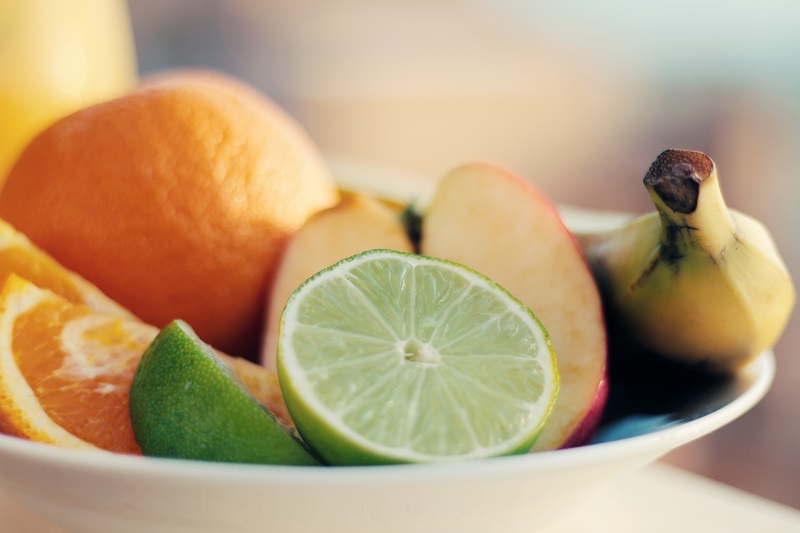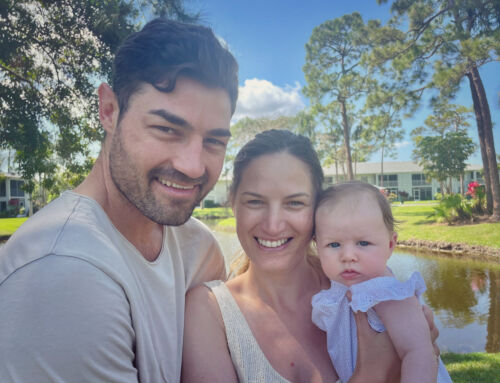If someone asked if you how much alcohol you consume in a week, what would you say? If someone asked you to take a month off drinking alcohol, would you expect that to be an easy or challenging task? What about sugar? Would you be able to provide an accurate measurement for how much sugar intake you have in a week or a month? Would it be simple for you to cut both alcohol and sugar out of your diet for 31 days?
What started out as a fun little bet between me and 3 other friends at work, turned into a charity competition that would result in a $3000 donation toward Sydney’s starlight foundation if we succeeded. That meant 0 alcohol for the full month of May (with the exception of one leave pass). The aim of the game was monitored on an honesty policy that we all swore to follow and if we broke that, we were expected to own up to it. In addition to taking alcohol out of my lifestyle, I decided to have a crack at taking sugar out as well as a personal challenge and detox.
I began this detox May 1st 2014, the day after I returned from my holiday in Cambodia, where happy hour included 50 cent beers and 2 dollar cocktails. There was none of that excessive drinking like the days of spring break in Cancun, but I was definitely drinking a few every day during those hot afternoons. This made the first week of detox pretty tough. I found myself going through withdrawal symptoms on day 3 where I was craving both red wine and chocolate. On day 5, I was having family dinner with Jack and my housemates and I was responsible for desert, great! I had a minor anxiety attack in the grocery store not knowing what I could get without sugar, while also being tempted by numerous delicious sugary options. I settled for fruit salad and yogurt. On day 7, I had noticeable mood swings and increased appetite. I could sense myself cracking. Perhaps sugar and alcohol at the same time was too much for me handle? I needed to take action, so I rounded up the sugar free peanut butter cup recipe from “I quit sugar” web-site and made a batch to through in the freezer. This was a life saviour for my sugar cravings and helped with the alcohol temptations as well. After day 8, things started getting easier. My desire started to fizzle out and I began to notice positive changes in my body that I hadn’t realised before because I was too focused on keeping mentally strong. By mid-month I was feeling great! I felt energised, clear, and rejuvenated. I noticed weight loss, mainly across my stomach and I woke up with a bounce. Plus, I started drinking a lot more water and teas before bed, so no doubt I was feeling hydrated and healthy.
I did start to notice that I was putting less effort into seeking out things to do on the weekends. I was quite happy with leaving my schedule open and just seeing where the days went. I also enjoyed having a couple quiet nights in where I was cooking and baking delicious fresh foods and watching some of my fav flicks. However, I told myself before doing this detox that I wouldn’t become a hermit and would try to maintain my social life. So I still went out, just sober.
Well, everything changes being out on the town sober when everyone else is drunk. I became highly attentive to detail. I witnessed a few falls, saw some relationship dramas, and listened to some people close talk me about something that might have been profound and deep, but I actually couldn’t understand a dame word they were saying. One thing I will say, I remained envious of the fun times everyone was having. Regardless of its health benefits, taking alcohol out of the mix can also take away some of the excitement in the social scene. It was nice to be alert, remember conversations and wake up hangover free, but dancing to Avicii sober, just isn’t the same. Still, when I could feel and see such noticeable changes in my body after cutting out alcohol and sugar, my curiosity sparked and I wanted to know more about what alcohol and sugar are made of, how it effects our bodies and some the consequential results of excessive consumption.
We all know alcohol usually refers to drinks such as beer, wine, or spirits. But what else is in it and why do we love the feeling it gives us? Alcohol contains ethyl alcohol, which is a substance that causes drunkenness and changes in consciousness, mood, and emotions. MRI scans prove that alcohol triggers the same receptors in the brain as sugar, cocaine and nicotine. It’s that bliss or euphoric feeling we get after consumption that keeps us wanting more. Moreover, it can give us confidence and lowered inhibitions, the classic ingredients for a good time! However, it’s important to understand that drinking in excess can have irreversible damage done to our livers.
According to documentary “Drinking yourself to death” there has been a disturbing rise in alcoholic liver disease in the UK where numbers have doubled in the last ten years and ages are getting younger and younger. Doctors are now seeing young, high earning professionals in their mid-twenties and thirties with early signs alcoholic liver disease and predict an epidemic of Cirrhosis in the next 15 years if consumption doesn’t go down. Cirrhosis is when healthy cells are replaced by scar tissue and the liver can’t perform its vital functions of the metabolism. Anyone drinking heavily is at risk of this. However, if caught in in early stages, your liver can be restored back to its healthy functional state if you abstain from drinking alcohol for a few months. Of course, you would have to monitor it afterwards as well. Liver disease can sneak up silently, so if you are at all concerned, it might be an idea to get a blood test done to reassure yourself. The recommended max daily intake of alcohol is equivalent to 1 glass of wine per day for women and two cans of beer for men. Any more than that is a health risk.
So what about sugar? Sure, I know it to be the refined powder like substance extracted from sugarcane that we add the coffees, cereals and fruits etc. But what else is sugar contrived of?
Sugar consists of Glucose and Fructose. Glucose forms the fat under skin which is the more obvious fat, whereas fructose forms fat around our organs, not so obvious. What that means is, you can still be thin and have signs of metabolic disease, which massively contributes to diabetes, heart failure and other major health issues throughout the course of your life. Additionally, fructose shuts down the signal that tells the brain we are full, so we continue to eat more when we’ve actually had enough.
According to Fifth Estate’s Canadian documentary called “Secrets of Sugar,” there has been an alarming rise in obesity, diabetes, and heart disease in North American since the 1960’s. In the 80’s the food industry took notice of this, and labelled fats in food as the bad guy. But if you take out the fat, the food tastes like cardboard, so instead they added sugar, a lot of it. As a result, diabetes tripled in the mid 90’s. Dr Robert A Lustig who spoke up about this issue in “The Bitter Truth” suggests that half the sugar we consume isn’t in items we know even have sugar (sauces, hamburger parties, bread etc.). Essentially all processed foods with a label on it will have some form of sugar. Dr Robert further explains that the amount of sugar in our foods is no accident. The food industry makes billions of dollars in sales by selling foods that are poisonous to our health, but taste good. They go to great lengths to find out human vulnerability and use that to their advantage. To put things in perspective, 1 can coke has 10 teaspoons of sugar. The Canadian heart disease foundation recommended intake of sugar is 6 teaspoons per day for woman and 9 teaspoons for men. The average person sugar intake in Canada sits at 26 teaspoons per day, which is 40 kilos per year. Why? Because sugar is addictive and happens to be everything. Dr Robert argues that we wouldn’t have these epidemics of people with addictions unless someone (large brand names and corporations) weren’t making a lot of money off it.
Food industries argue that it’s the consumer’s responsibility and they choose to eat these processed foods. True, we can do our best to shop and cook our own meals using fresh produce. But is it fair to place the blame consumers for eating something that is so easily accessible, with little to no knowledge or warning of the health issues that can come from consumption? Sometimes the information provided is just a straight up lie and false advertising. It’s no secret that marketing is a way to glorify a product or idea to make someone want to buy it. The food industry isn’t any different, except that this isn’t just affecting our bank accounts, it’s affecting our health and longevity of our lives.
Ultimately, it was a good decision to cut out alcohol and sugar. As confronting as it was at times, I now know how good I can feel without it. This month, I’ve noticed immediate changes in my body for the worst after going back to drinking and eating sweets. Don’t get me wrong, I still love my wine the creamy delicious taste of chocolate, but my definition of “moderation” has changed. My challenge now is to take what I’ve learned and apply it to my daily lifestyle. A good start would be avoiding processed food as much as possible, reading ingredients on labels, monitoring my sugar intake, and reducing alcohol consumption. Just as Leigh Hunt once wrote, “The groundwork of all happiness is good health.” Thanks for reading!










Awesome post. i recently cut out sugar and noticed a considerable change in my body.
Thanks Hector, I agree, it’s taste good but can be pretty damaging… Moderation right!